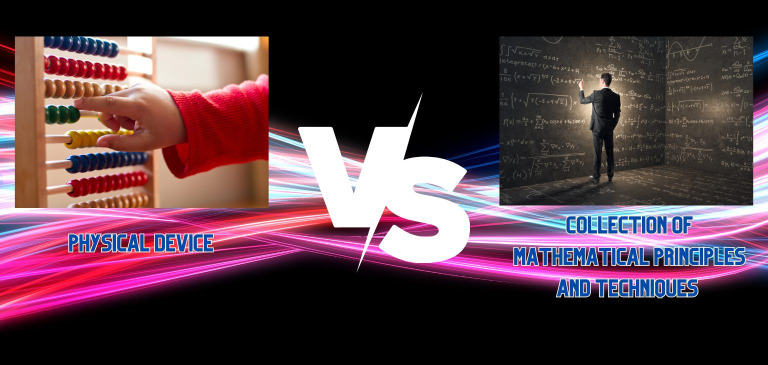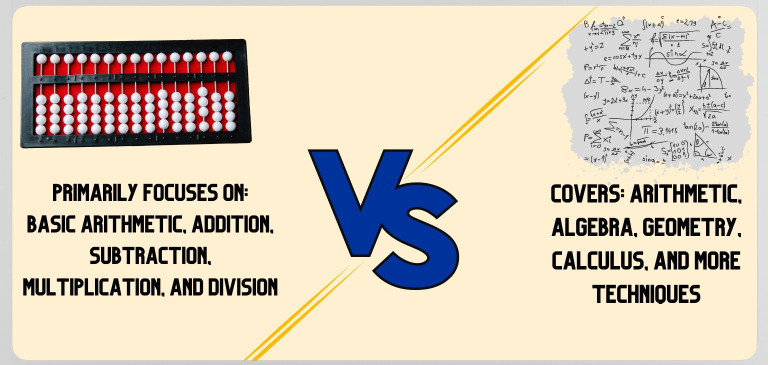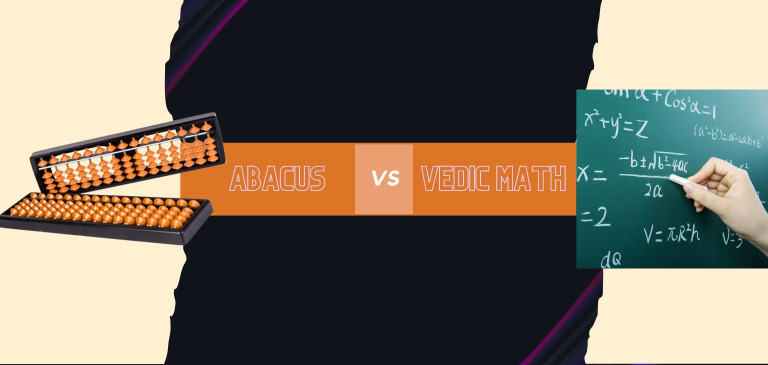Abacus and Vedic mathematics are two different approaches to mathematical calculations. Here are the key differences between the two:
1. Origins and History
- Abacus: The abacus is an ancient calculating tool that originated in ancient Mesopotamia around 2500 BCE. Various civilizations have used it throughout history.
- Vedic Mathematics: Vedic mathematics refers to a system of mathematical calculations based on the ancient Indian scriptures called the Vedas. It was rediscovered in the early 20th century by Indian mathematician Swami Bharati Krishna Tirtha.
2. Tools and Techniques
· Abacus: The abacus uses a physical device consisting of rods or wires with beads that can be moved along the rods to represent numbers. It enables users to perform calculations through the manipulation of the beads
.
· Vedic Mathematics: Vedic mathematics does not rely on any specific physical tool. It is a collection of mathematical principles and techniques derived from the Vedas. The methods are mental and involve various mathematical shortcuts and patterns.

3. Scope and Applications
- Abacus: The abacus primarily focuses on basic arithmetic operations like addition, subtraction, multiplication, and division. It is often used to teach young children mathematical concepts and develop their mental calculation abilities.
- Vedic Mathematics: Vedic mathematics covers various mathematical operations and concepts. It includes arithmetic, algebra, geometry, calculus, and more techniques. Vedic mathematics aims to provide alternative methods for solving complex mathematical problems efficiently.

4. Complexity and Learning Curve
- Abacus: Learning to use the abacus requires mastering the physical manipulation of beads and understanding its place value system. Becoming proficient in using the abacus for calculations can take time and practice
- Vedic Mathematics: Vedic mathematics provides mental shortcuts and techniques to simplify complex calculations. However, learning Vedic mathematics may require a solid foundation in basic arithmetic and an understanding of the principles and techniques involved.
5. Cultural Significance
- Abacus: The abacus has been widely used in different cultures worldwide and is historically significant in various societies.
- Vedic Mathematics: Vedic mathematics has its roots in ancient Indian culture and draws inspiration from the Vedas. It is considered a part of India’s mathematical heritage and has gained popularity both within India and internationally.

Both abacus and Vedic mathematics offer different approaches to mathematical calculations and have their advantages and applications. The choice between them depends on individual preferences, learning goals, and the specific mathematical operations one wants to focus on.




